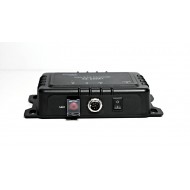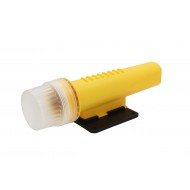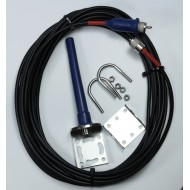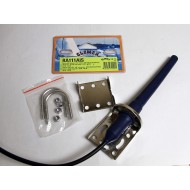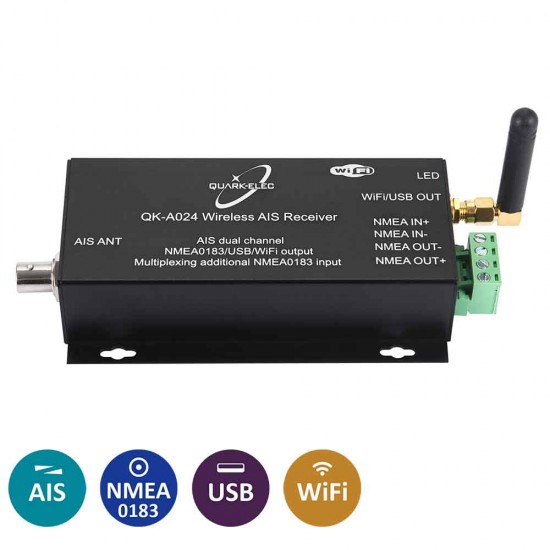
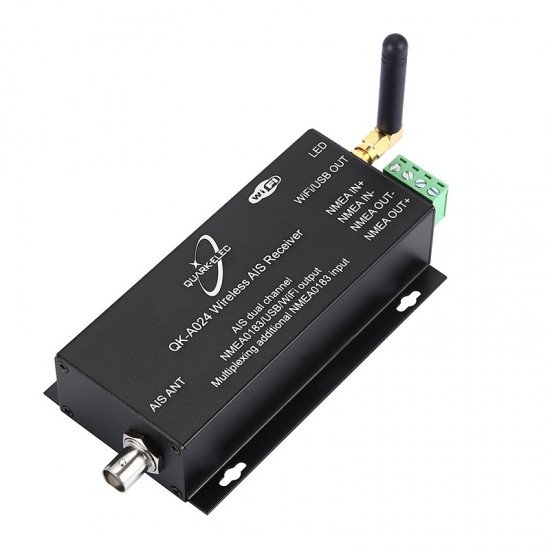
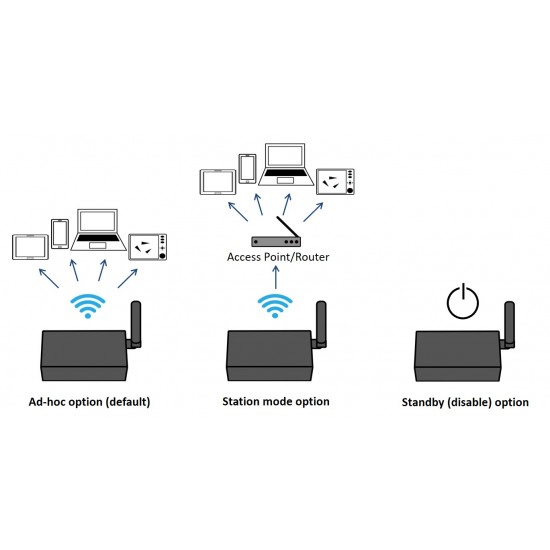
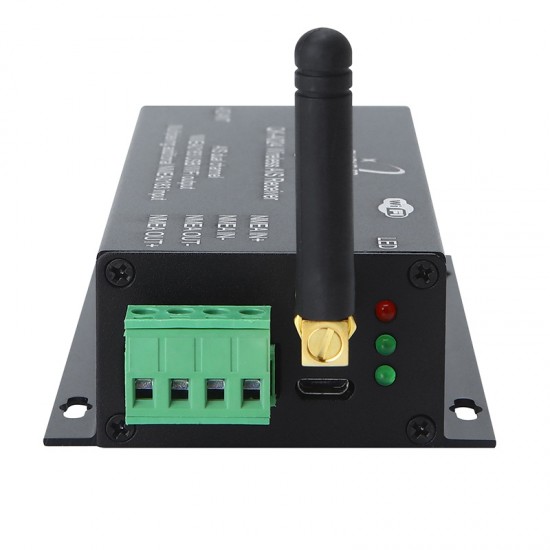
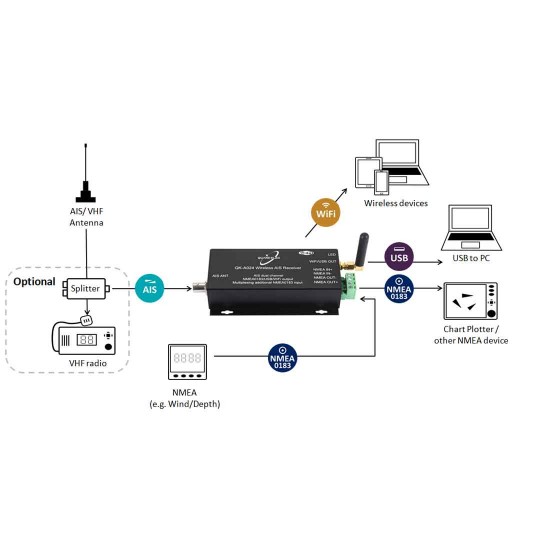





- Stock:
- Model: QK-AO24
Description
QK-A024
AIS Receiver with NMEA Multiplexer + WiFi
The ideal AIS receiver with AIS and NMEA multiplexer for your convenience.
- Combines
dual channel AIS data with NMEA information
- Allows
you to view wirelessly from smartphones, tablets and laptops (with or
without a Wi-Fi router)
- Also connects to NMEA chart plotters
Description

The ideal Wireless AIS Receiver and NMEA multiplexer for your convenience.
The A024 combines dual channel AIS data with NMEA information allowing you to view wirelessly anywhere on your boat on smartphones, tablets and laptops (with the added option to connect to a chart plotter or device of your choice).
(NOTE: If you need integrated GPS, consider the A026)
- Compact dual channel AIS receiver
- Multiplexer: combines AIS with NMEA 0183
- Can be used wireless (WiFi) or through the USB or NMEA ports
- Up to 22 nautical miles receiving range
- Compatible with chart plotters, Windows, Mac OS X, Linux systems, Android and iOS
Combines AIS with NMEA

Features
- Two independent receivers monitoring AIS channels (161.975MHz &162.025MHz) and decoding both channels simultaneously
- Sensitivity down to -105 dBm@30% PER
- Up to 22 nautical miles receiving range
- USB 2.0 powered (<270mA @ 5.0V)
- NMEA-0183 message output through WiFi, USB and RS422
- Combine NMEA input (48,00bps only), AIS messages and output as a seamless stream of data
- BNC connector for 50 Ohm VHF antenna
- WiFi: Ad hoc and Station operating modes.
- GPS and WiFi Standby function (from firmware version 1.2/ May 2020 onwards)
- Compatible with Windows XP,7,8,10,Mac OS X, Linux systems, Android and iOS. Please note, initial configuration may only be performed using a Windows operating system.
- Plug & play connectivity with chart plotters and PCs
- Can connect to Garmin and older RS232 products through our Protocol Bridge (AS03)
What’s included?
- 1 x QK-A024
- 1 x USB cable
- 1 x setup guidebook
This product now includes a dual band WiFi antenna (AS05) as standard.
Our QK-A024 has the following connections/indicators:
- AIS antenna connector – standard BNC female 50 Ohm connector. An active VHF antenna splitter (e.g. QK-A015-RX) is required if one VHF antenna is shared by the QK-A024 and VHF voice radio. (We recommend separate antennas ideally).
- USB connector – a micro USB connector supplies power to the unit and also outputs the NMEA messages. It can also be used for adjusting parameters using the GUI configuration software.
- WiFi – connectivity in both Ad hoc and station modes on 802.11 b/g/n.
- NMEA 0183 output connectors – the QK-A024 can be connected to other AIS and SeaTalk compatible equipment (eg. wind/ depth or heading sensors), the QK-A024 sends out NMEA 0183 messages via WiFi, USB and NMEA outputs simultaneously for chart plotters.
- Check the LED lights – the QK-A024 features three LEDs which indicate power (top, red), AIS (centre, green), and GPS* (bottom, green) status respectively. The AIS LED will flicker at a fast rate when signals are received. *As GPS is not fitted on this unit the GPS LED performs no function.
.
Optional – will you need to add a Protocol Bridge?
This product uses the NMEA 0183-RS422 protocol (differential signal), however some chart plotters or devices may use the older NMEA-RS232 protocol (single-ended signal).
Some customers have found that their Garmin products use the older RS232 connection. This is not a problem as our QK-AS03 Protocol Bridge connects NMEA-RS232 wiring to MNEA0183-RS422 and vice versa.
The QK-AS03 Protocol Bridge is easy to install using a simple ‘plug ‘n’ play’ connection with no setup or configuration needed. You will probably need one if you are connecting to a Garmin device or some Raymarine products.
The easiest way to check is to look at the input/output connections on the device that you will connect the multiplexer to. If the input/output connections on your device (chart plotter, depth reader, etc.) have a TX, RX or GND connection, you will need to use a protocol bridge.
If in doubt contact us for advice.




